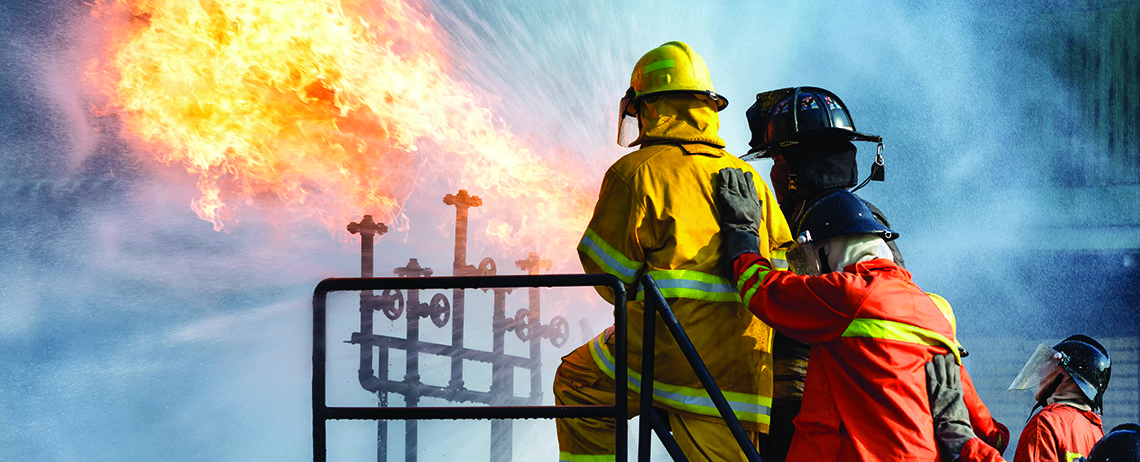7 Crucial Lessons From London’s Tragic Grenfell Fire
SafetyCulture News | By | 12 Nov 2018 | 5 minute read

Seventy-two people died when Grenfell Tower, a 1970s high-rise apartment block in west London, was engulfed in flames in June 2017. Whole families perished, including a six-month-old baby found cradled in her mother’s arms. Another man burned to death staying behind with his two bull terriers. A 24-year-old artist whose work was being shown at the Venice Biennale died alongside her mother. Another 70 were injured, while more than 200 more fortunate residents managed to escape.
Anne Power, Professor of Social Policy and Head of Housing and Communities at the London School of Economics, says Grenfell was a unique fire. “It showed up terrible weaknesses in public services, particularly social housing,” she says.
“It underlined the gaping inequalities in our society, our reliance on technical systems we don’t understand, our weak control over conditions, our poor enforcement of standards, and a constant downgrading of low-cost renting, both social and private.”
While the charred building remains, swaddled in plain white fabric and topped with a large green heart with the words: “Grenfell: Forever in our hearts”, fingers have been pointed in every direction since the tragedy. An official interim report, Independent Review of Building Regulations and Fire Safety, was handed down in May 2018, and the Grenfell Tower Inquiry is still in progress.
Even so, planners, designers, engineers, fire safety experts and governments around the globe are taking note of the lessons learned in the fire’s wake. Here are seven of the most critical.
1. Consider the building as a whole
For Birgitte Messerschmidt, director of applied research at the National Fire Protection Association in the United States, one of the major takeaways from the Grenfell disaster is the need to consider a building in its entirety when assessing its susceptibility to fire. “As in many major disasters, it was not just one or two things that contributed to the Grenfell fire, it was several,” she says.
In Grenfell’s case, factors such as the building and cladding materials, how such a system was installed on the building, the regulations, codes and standards that were called upon, the alarm system, the lack of an escape route, all need to be considered together.
“It was the failure of looking at the building in a holistic way,” Messerschmidt says. “People tend to just talk about the cladding but it’s the entire system that caused the problem. You need to understand what the risks associated with this building are from a fire perspective and what needs to be done to ensure that the risk is brought to an acceptable level.”
2. Ensure a single point of control
One of the major problems raised in the ongoing Grenfell Tower Inquiry was a lack of information about the tower and its emergency procedures. The Commissioner of the London Fire Brigade, Dany Cotton, told the inquiry the brigade had “woefully inadequate” data about Grenfell Tower, including just one aerial picture of the tower’s roof.
Power says there should be a single point of control for any multi-storey block to ensure everyone, including staff, residents and emergency services, knows where to go and who is responsible in an emergency. “There should be clear information and instructions for all tenants about what to do in the case of an emergency and what precautions to take to keep the building and homes safe,” she says.
3. Make annual testing mandatory
As well as maintaining up-to-date information about the state of the building and procedures, annual checks of a building should also be mandatory. In much the same way that cars undergo annual checks for roadworthiness, Power believes an equivalent for buildings could reduce the risk of another Grenfell.
There needs to be a “roadworthiness” test. “All tower blocks, multi-storey and high-rise blocks are complex systems involving the interaction of many different technical features such as plumbing, electrical wiring, heating, lift maintenance, roof and windows,” Power says. “Importantly, the ‘multi-storey rego’ would cover fire doors, fire precautions and means of escape.”
4. Maintain and enforce basic onsite standards
Power believes landlords should ensure basic conditions are maintained for all residents through onsite management and supervision. “In the case of tower blocks, a concierge at the base of the block is an ideal solution,” she says. “It is crucial that a landlord be able to enforce on all residents a basic standard, both in the stairwells and within units. This requires onsite management and supervision. There should also be the ability to enforce onsite social conditions, which is very important in multi-storey blocks—neighbours must accept other people’s right to a peaceful home.”
5. Consider international standards
After the Grenfell fire, the United Nations and the World Bank-backed International Fire Safety Standards (IFSS) Coalition was set up to develop a global standard for fire safety in buildings. “The world needs to set minimum levels of fire safety because inconsistency not only causes uncertainty in investment, more importantly it is a risk to the people working or living in these buildings,” says Australian Property Institute Life Fellow and IFSS coalition member Robert Hecek.
Gary Strong, another IFSS member, says: “Differences in materials testing and certification, national building regulations and codes, and guidance on how to manage buildings in use, particularly higher risk buildings, means there is confusion, uncertainty and risk to the public.”
Messerschmidt, however, is realistic about coalition building. “It’s an interesting approach,” she says. “But to go in and develop an international model code or model regulation, that’s a big step. To give you an example, in the European Union, with 27 member states, they don’t have just one regulation for all the member states, every country has their own regulations related to fire. So trying to create it globally will be a major challenge.”
6. Implement strong inspection regimes and consequences
While standards are important, whether global or local, if they are not enforced, they’re almost worthless. According to Messerschmidt, countries need a system that ensures what is designed adheres to the code and standards and what is actually built reflects what was designed. “That process needs to be in place but, unfortunately from my experience around the globe, it is often inadequate in many countries,” she says.
Messerschmidt believes countries need to make inspection regimes a legislative or policy priority. They then need to ensure the people who are enforcing these regimes also have the training and education they need to understand the complex systems they’re inspecting.
7. Listen to residents
For Power, the crucial lesson to come from the Grenfell disaster is the role of residents. It is vital to listen to tenants, she says, not just because they are entitled to have a voice in what happens in and around their homes, but also because they often know more than officials about what happens in the blocks in which they live.
Residents can also be encouraged to become part of the risk-mitigation strategies by offering them direct representation on committees that make management decisions, set budgets and establish building priorities.
“Landlords benefit greatly from liaising with tenants [and] they often know more about who lives in their block and what changes have been made,” Power says. “Tenants are also valuable conduits for information to other tenants and can pass on advice and instructions and gather useful information that helps landlords.”
Important Notice
The information contained in this article is general in nature and you should consider whether the information is appropriate to your specific needs. Legal and other matters referred to in this article are based on our interpretation of laws existing at the time and should not be relied on in place of professional advice. We are not responsible for the content of any site owned by a third party that may be linked to this article. SafetyCulture disclaims all liability (except for any liability which by law cannot be excluded) for any error, inaccuracy, or omission from the information contained in this article, any site linked to this article, and any loss or damage suffered by any person directly or indirectly through relying on this information.





